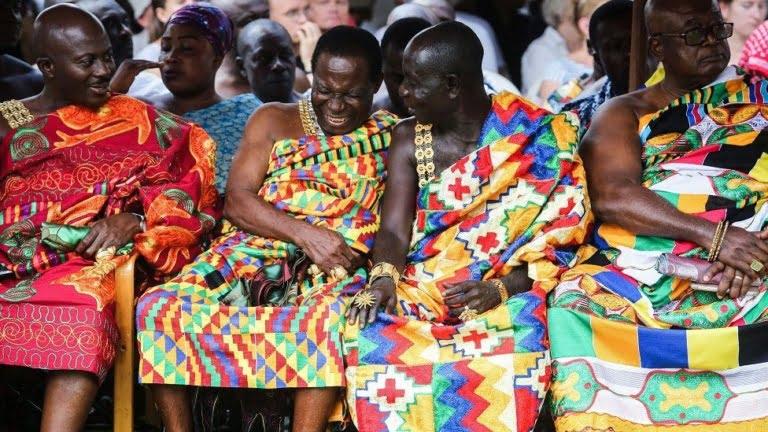Unveiling the Tapestry of Ghana’s Cultural Heritage: A Journey Through the Intricate World of Kente Cloth ##
Table of Contents
- 1 Unveiling the Tapestry of Ghana’s Cultural Heritage: A Journey Through the Intricate World of Kente Cloth ##
- 2 Introduction ##
- 3 The Loom of Creation: Weaving the Threads of Kente ##
- 4 Patterns and Symbolism: A Language Woven into Cloth ##
- 5 Variations and Styles: A kaleidoscope of Colors and Designs ##
- 6 Historical and Cultural Significance: A Tapestry of Identity ##
- 7 Economic Impact: A catalyst for Empowerment ##
- 8 Practical Tips for Experiencing Kente’s Enchantment ##
- 9 Conclusion ##
Meta title: Exploring the Cultural Legacy of ghana: Kente Cloth, a Tapestry of Tradition
Meta Description: Embark on a captivating journey into the vibrant world of Kente cloth, uncovering its intricate designs, rich symbolism, and profound cultural importance in Ghanaian heritage.
Introduction ##
Wrapped in an aura of royalty and tradition, Kente cloth serves as a vibrant canvas upon which the cultural history of Ghana is woven. Originating from the Ashanti Kingdom, this exquisite fabric has captivated the world with its mesmerizing patterns, vibrant hues, and profound symbolism. In this comprehensive guide, we embark on a journey too unravel the intricate tapestry of Kente cloth, exploring its origins, techniques, variations, and enduring impact on Ghanaian culture.
The Loom of Creation: Weaving the Threads of Kente ##
Kente weaving is an ancient art form, with its origins traced back to the 17th century. Skilled artisans, known as “weavers,” create Kente cloth on narrow wooden looms. The process begins with the cultivation of cotton, the primary fiber used in weaving. The cotton is then spun into fine threads, dyed using natural pigments derived from plants and minerals, and ultimately transformed into the vibrant yarns that form the foundation of Kente.
Patterns and Symbolism: A Language Woven into Cloth ##
Kente cloth is renowned for its intricate patterns and captivating color combinations. Each pattern carries a unique meaning, with designs passed down through generations, holding profound cultural and social significance. Common motifs include:
- Adinkra symbols: Graphic elements representing proverbs, concepts, and values, woven into the cloth to convey specific messages.
- Geometric shapes: Lines, squares, triangles, and other geometric forms symbolize various aspects of life, such as fertility, peace, and harmony.
- Natural elements: Representations of plants, animals, and other elements of the natural world, imbuing the cloth with a sense of vitality and connection to the environment.
Variations and Styles: A kaleidoscope of Colors and Designs ##
Over the centuries, Kente has evolved into a diverse array of styles, each associated with a specific region or occasion:
| Region | Style | Distinctive Features |
| :—: | :—: | :—: |
| Ashanti | Classic Kente | Bold, geometric patterns in vibrant colors, often associated with royalty and special occasions |
| Ewe | Ewe Kente | Strips of contrasting colors woven together, creating vibrant and eye-catching designs |
| Akim | Akim Kente | Narrow strips of Kente cloth sewn together to form a wider piece, characterized by intricate patterns and rich hues |
| Fante | Fante Kente | Colorful and elaborate patterns, often featuring circular or floral motifs |
Historical and Cultural Significance: A Tapestry of Identity ##
Kente cloth has played an integral role in Ghanaian history and culture. It is not merely a fabric but an embodiment of the nation’s rich traditions and values. Kente has been worn by kings and chiefs for centuries, symbolizing power, authority, and social status. It has also been used in religious ceremonies, festivals, and special occasions, serving as a vibrant expression of cultural identity.
Economic Impact: A catalyst for Empowerment ##
The production and sale of Kente cloth have a significant economic impact in Ghana.It is indeed a major source of income for weavers and their families, notably in rural and underserved communities. The popularity of Kente both within Ghana and internationally has created a thriving industry, contributing to economic empowerment and cultural preservation.
Practical Tips for Experiencing Kente’s Enchantment ##
Visit Kente-producing villages: Immerse yourself in the heart of Kente production by visiting villages where weavers showcase their skills and sell their creations.
Attend cultural festivals: Time yoru visit to coincide with a customary Ghanaian festival to witness the vibrant display of Kente worn by participants.
* Purchase authentic Kente: Support local artisans and ensure the preservation of Kente by purchasing authentic, handcrafted pieces from reputable sources.
Conclusion ##
Kente cloth is more than just a fabric; it is an enduring symbol of Ghana’s cultural legacy. Through its intricate patterns, vibrant colors, and profound symbolism, Kente weaves a captivating narrative of tradition, identity, and artistic mastery. As we delve into the world of Kente,we not only appreciate its aesthetic beauty but also gain a deeper understanding of the rich cultural heritage it embodies. By preserving and celebrating this invaluable art form, we honor the artistry of past generations and ensure that the tapestry of Kente continues to inspire and captivate for centuries to come.

